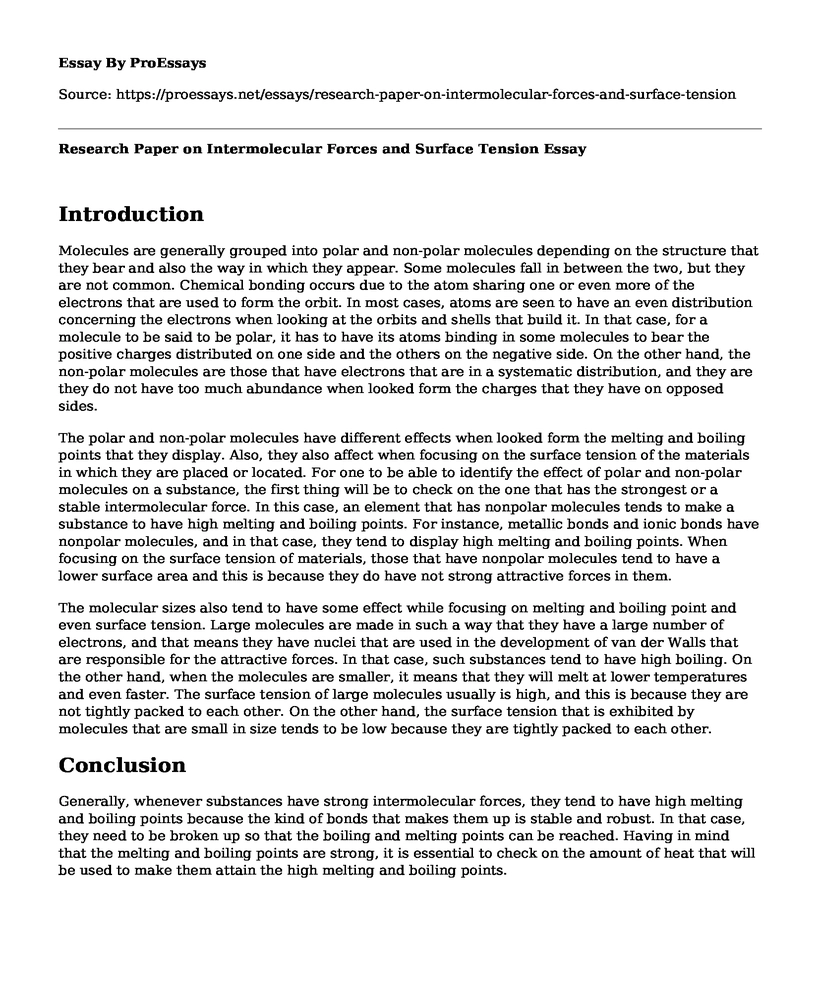Introduction
Molecules are generally grouped into polar and non-polar molecules depending on the structure that they bear and also the way in which they appear. Some molecules fall in between the two, but they are not common. Chemical bonding occurs due to the atom sharing one or even more of the electrons that are used to form the orbit. In most cases, atoms are seen to have an even distribution concerning the electrons when looking at the orbits and shells that build it. In that case, for a molecule to be said to be polar, it has to have its atoms binding in some molecules to bear the positive charges distributed on one side and the others on the negative side. On the other hand, the non-polar molecules are those that have electrons that are in a systematic distribution, and they are they do not have too much abundance when looked form the charges that they have on opposed sides.
The polar and non-polar molecules have different effects when looked form the melting and boiling points that they display. Also, they also affect when focusing on the surface tension of the materials in which they are placed or located. For one to be able to identify the effect of polar and non-polar molecules on a substance, the first thing will be to check on the one that has the strongest or a stable intermolecular force. In this case, an element that has nonpolar molecules tends to make a substance to have high melting and boiling points. For instance, metallic bonds and ionic bonds have nonpolar molecules, and in that case, they tend to display high melting and boiling points. When focusing on the surface tension of materials, those that have nonpolar molecules tend to have a lower surface area and this is because they do have not strong attractive forces in them.
The molecular sizes also tend to have some effect while focusing on melting and boiling point and even surface tension. Large molecules are made in such a way that they have a large number of electrons, and that means they have nuclei that are used in the development of van der Walls that are responsible for the attractive forces. In that case, such substances tend to have high boiling. On the other hand, when the molecules are smaller, it means that they will melt at lower temperatures and even faster. The surface tension of large molecules usually is high, and this is because they are not tightly packed to each other. On the other hand, the surface tension that is exhibited by molecules that are small in size tends to be low because they are tightly packed to each other.
Conclusion
Generally, whenever substances have strong intermolecular forces, they tend to have high melting and boiling points because the kind of bonds that makes them up is stable and robust. In that case, they need to be broken up so that the boiling and melting points can be reached. Having in mind that the melting and boiling points are strong, it is essential to check on the amount of heat that will be used to make them attain the high melting and boiling points.
Cite this page
Research Paper on Intermolecular Forces and Surface Tension. (2022, May 16). Retrieved from https://proessays.net/essays/research-paper-on-intermolecular-forces-and-surface-tension
If you are the original author of this essay and no longer wish to have it published on the ProEssays website, please click below to request its removal:
- Coastal Community Studies: Rockaway and Long Beach, New York after Hurricane Sandy
- Essay Sample on Space Laws and Ethics
- How Ecosystems Work Essay
- How A Spring Works and the Physics Behind It - Research Paper
- Essay Example on the Psychic Staring Effect: Fact or Fiction?
- Paper Example on Unlocking Potential: How DFT Revolutionised Many-Body Quantum Mechanics
- Free Report Sample on Criminal Intelligence Agency: Leveraging Math Models to Improve Decision-Making







